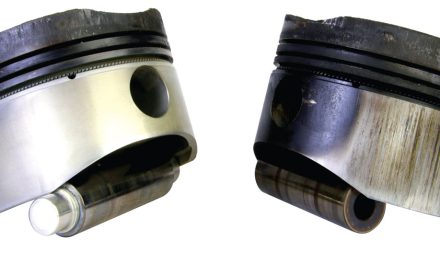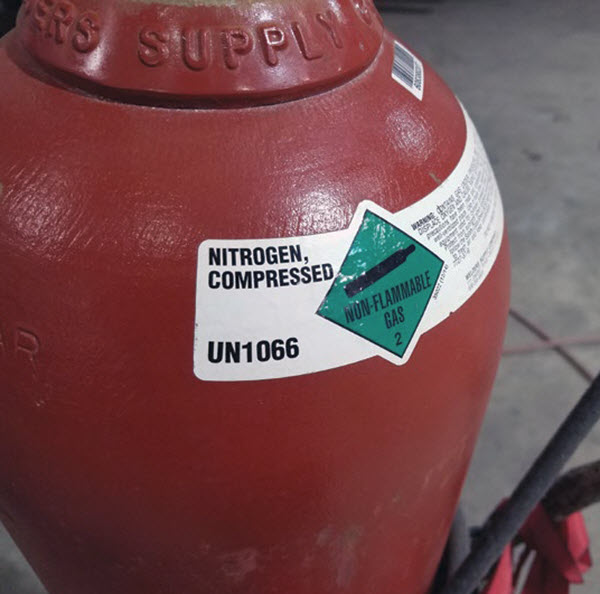Q
I have a Piper Cherokee 150 with a new engine (50 hours SMOH). At sea level, cold weather, wide open throttle, and mixture full (no carb heat of course), it used to go to 2,700 rpm at takeoff. Now it’s between 2,400 and 2,500 only. I added CamGuard for winter. Can this be the cause? I know this doesn’t make sense. Why?
—Davidev
A
It’s not the CamGuard. I assume this is a fixed pitch prop? Do you have any engine monitoring? I would check mixture at wide-open throttle, fuel flow, and ignition timing. What is the climb rate like? It should be quite low. If climb seems normal, then it could be an issue with the rpm gauge. Also check for any intake restriction.
—Eric Panning
A
Have you only been missing the 200 rpm since the engine swap 50 hours ago? My fixed-pitch Cessna had exactly the same symptom right after an engine change as well.
—Seneca38173
A
It is a fixed-pitch prop. No engine monitoring unfortunately. Climb rate seems to be OK but a bit more sluggish than during the summer, which doesn’t make sense to me. The issue is not related to the new engine, since I had 2,700 rpm no problem for a few months SMOH. Interesting theory about the prop in cold air. I had never heard that theory. I was flying at 40 degrees F.
—Davidev
A
It should be climbing like a champ in the cold air. The higher air density is your friend! Assuming it’s well warmed-up and running smoothly, can you visually confirm the throttle plate is wide open when you firewall the throttle lever, and the fuel flow lines up with your POH like Eric suggests above (assuming you have a factory fuel flow gauge).
—Seneca38173
A
Davidev, 40 degrees F is not that cold. The hp loss could be over 10% at that rpm vs. full rpm. I would focus on air, fuel, and timing.
—Eric Panning
A
This is a 1962 airplane with just the traditional/analog engine gauges. Oil temp and oil pressure green and fuel pump all working. All in the green but not sure how reliable they are on the exact indicator. I will check the throttle plate. Good idea. And I agree: cold, dense air should improve engine performance.
—Davidev
A
Your shop also has a device to check rpm too. What is the max static rpm with brakes held at full throttle?
—Eric Panning
A
Eric, I will try to check. Since the brakes don’t hold full power, I didn’t do this yet. My PA-28 150 doesn’t have the 160 hp conversion, by the way.
—Davidev
A
Yes, instead of 150 hp, you are likely making around 140 hp — around 7% less. However, the net effect is more significant (I think) as the prop is not capable of absorbing 140 hp at the lower rpm. The impact to thrust could be 30%, and this would impact climb and acceleration.
—Eric Panning
A
Not sure this is relevant, as I have a 180 Cherokee, but in your original post you state: “Piper Cherokee 150 with new engine (50 hours SMOH), sea level, cold weather, wide open throttle, and mixture full (no carb heat of course).” Sea level? Is this on the takeoff roll? If so, that is normal! It will be close to the minimum static rpm value in the POH or type certificate data sheet. For my airplane, that’s around 2,350 rpm; yet in cruise you can see 2,700 depending on many factors, but never on the takeoff roll.
In cruise flight, it depends on temp, density altitude, prop pitch (even fixed), aircraft pitch, etc., as others have pointed out. Did you get a new prop with the “new” engine? Was your prop overhauled? Are your mag drops still normal? Mechanical tachs can be wrong, so a check with an optical tach, as was suggested, is a good idea if you’re seeing this in normal cruise flight at sea level altitudes. Also, have you switched fuel suppliers?
—MikeJJ
A
Mike, that’s what happened to my Cessna. We put the wrong prop on after the engine swap. And since it’s a universal flange, I’ll bet that happens all the time.
—Seneca38173
A
No new prop, no prop overhaul. By sea level, I mean upwind and crosswind from 200 ft to 1,200 ft. I’m using the same fuel. A couple of months ago, I was seeing 2,700. Now I see 2,450 average. Mag drop is normal.
—Davidev
A
Where in the Northwest? I’m in Portland. I also have an optical prop tach meter.
—Eric Panning
A
I strongly suggest finding a way to do a static rpm test. Chock all the wheels to help the brakes? A ’62 model should have a 58” pitch propeller. Minimum static rpm is 2,275. If not at least that high, the airplane is not airworthy! If you choose to fly, fly alone with minimum fuel until this is sorted out. In my experience, 2,325 would be needed to see 2,700, as you describe.
Since it worked after overhaul, these are the items I would check first.
- Mag timing at 25 degrees. 5 degrees late on both might do this.
- Make sure the carb heat door closes fully, and the throttle opens fully. There should be a little bit of “cushion” just before the knob hits the panel. I like about 1/8” to 1/16”. This lets me know I am at the physical stop of the respective control, and lets you know when something has changed.
If there are no discrepancies above:
- The intake hose is a special hose from Piper. Normal SCAT tubing can collapse, limiting airflow.
- Check the muffler for a loose baffle. The “normal” higher power settings on break-in are hard on exhaust systems, and often there are stresses induced in the system, as the cylinder exhaust flanges can be in slightly different positions than the original cylinders.
Both items above have killed people. If all that checks out, you may have premature cam failure. There would be metal in the oil screen/and or filter, though.
My bet is the muffler.
—n4211J
A
Mags usually require a timing check after about 25 hours. The timing may have drifted some.
—condairmaint
A
Just a side note about the CamGuard (not relevant to your power problem). Most engine builders recommend not using it until the engine is broken in.
—hallmark
A
I’m with n4211J. Hoses, control adjustment, and timing are easy checks and should be done first. Not to mention the usual mag check during runup should be OK, right? But muffler baffles are a likely cause. I’ve got a 180 in annual right now that’s getting a new muffler, with the old one only three years old! At least it had the decency to tell us about it by spitting out a piece of baffle.
—AndyGoldstein
A
It’s been a few years for me, but I learned to fly inter-island in Hawai’i in a PA-28-140. The engine needed to be leaned a tad from full rich. Have you tried leaning your engine at static runup and full power?
—bearair70
A
As mentioned, an exhaust restriction like a baffle is a good place to look. If you had any incidents of backfiring, that is something that can damage baffles. They also can just fail over time.
—Eric Panning
A
Thanks everyone for all the valuable input. Here’s a quick update. I was finally able to fly last week. No icing conditions for 24 hours, so I flew the airplane up to 3,000 ft and leaned the mixture quite aggressively. I increased power in level flight. The engine at WOT got to 2,700 rpm. It still provided 2,450 rpm full mixture at takeoff at sea level. Why? Is the mixture setting too rich?
—Davidev
A
David, it does sound like you are too rich. On the ground, do a static runup, and pull the mixture back to about where you had it in cruise (also as bearair70 has suggested). This would not be the mixture setting that it is for idle. If it’s too rich at power, then it is jetting. When was the carb last overhauled? Also, it could be collapsing air hoses for intake and/or a problem with carb heat. Does the rpm go down with carb heat?
—Eric Panning
A
As noted in my original post, you will not see 2,700 rpm at full throttle, mixture rich, as in your takeoff roll. You will see something close to the book value for static rpm. The engine is purposely set to run rich at takeoff. Because we are operating an air-cooled engine, this helps manage engine temperatures during lower speed climbs to cruise altitudes.
This is also why it is necessary to lean the mixture in normally aspirated engines when operating at high-altitude airports before departure to assure you are getting best available power and can reach minimum static rpm.
Sounds like your engine is operating normally.
—MikeJJ
A
Thanks Mike. However, I did see 2,700 rpm in the upwind climb out at full mixture settings until a couple of months ago. The only difference is air temperature. Cold air is denser and, therefore, the engine should deliver more power, but I only see 2,450 max rpm vs. 2,700 in September. Same airport sea level. Why?
—Davidev
A
Davidev, if you’re flying a normally aspirated Cherokee, seeing 2,700 rpm (near redline rpm) on a takeoff climb is unusual at any outside air temperature. I certainly have never seen it after flying the 140 and 160, and 35-plus years in my 180.
Next time out, it’s best to make rpm comparisons at the same specific indicated airspeed and throttle position. Hold your pitch for the desired specific airspeed and then note the engine rpm. Aircraft pitch has a big effect on indicated rpm.
In cold winter weather, the pitch attitude and climb rate are truly impressive as you pitch for best rate airspeed. That is your engine developing more power, the wings developing more lift, and the prop developing more thrust.
—MikeJJ
A
Got it, Mike. I will definitely test as you recommend. I will also do a max rpm static check. I see that the range should set between 2,275 and 2,375, correct?
—Davidev
[Ed Note: The range tolerance for an aircraft’s static rpm is listed in its aircraft type certificate data sheet. MikeJJ posted the type certificate data sheet for Davidev’s plane, which confirms that the 2,275 to 2,375 range is correct for Davidev’s plane].





